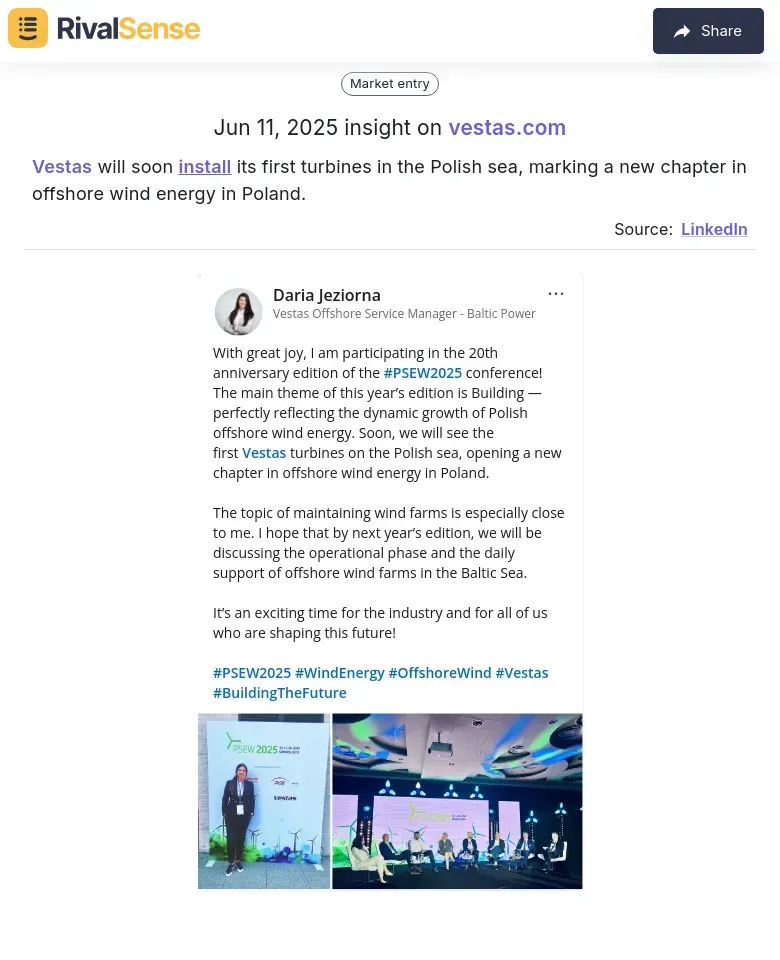Market Entry Wins: Real-World Competitor Insights for Growth
Entering a new market represents both tremendous opportunity and significant risk for B2B companies. A strategic approach that leverages competitor intelligence can dramatically improve your success odds. By analyzing competitors' moves, you gain insights into market gaps, regulatory hurdles, and customer preferences that shape effective entry strategies. This post explores practical frameworks using real-world competitor examples to help founders and CEOs turn market entry into sustainable growth. We'll demonstrate how tracking competitor activities provides actionable intelligence for smarter decision-making.
Expanding into Emerging Markets: Lessons from East Africa
Emerging markets like East Africa offer immense growth potential but require nuanced localization strategies. Understanding regional dynamics through competitor analysis helps avoid costly missteps. For instance, tracking financial service expansions reveals how companies adapt to local infrastructure limitations and payment preferences.

When RivalSense detected Eleving Group's expansion into Tanzania, it signaled strategic focus on East Africa's growing mobility sector. For businesses eyeing similar markets, such insights reveal:
- Where competitors are allocating resources
- Untapped regional opportunities
- Partnership ecosystems worth exploring
Practical Checklist for Emerging Markets:
✅ Conduct competitor gap analysis (what offerings are missing?)
✅ Identify credible local partners through competitor affiliations
✅ Pilot with adaptable payment models (e.g., cash-based in low-digital areas)
✅ Monitor infrastructure developments via competitor adaptations
Leveraging Technology for Market Penetration: The Digital Payment Revolution
Technology adoption often defines market entry success, especially in regions with underdeveloped banking systems. Payment innovation serves as a powerful wedge—companies solving transaction friction gain rapid user adoption. Tracking fintech competitors reveals local preferences and incentive models that resonate.

Bybit's zero-fee QR payment launch across Vietnam and the Philippines—captured by RivalSense—showcases how competitors leverage cashback incentives to overcome adoption barriers. This intelligence helps businesses:
- Benchmark local incentive structures
- Identify dominant payment integrations
- Anticipate customer acquisition costs
Actionable Steps:
- Research regional payment leaders through competitor partnerships
- Design tiered incentives (e.g., first-transaction bonuses)
- Integrate local payment gateways before market entry
Sustainable Energy Expansion: Breaking New Ground in Offshore Wind
Renewable energy markets demand deep regulatory and operational intelligence. Competitor movements reveal permitting timelines, supply chain strategies, and government incentives. Early detection of infrastructure projects helps benchmark entry requirements and partnership opportunities.

Vestas' Polish turbine installation—tracked via regulatory filings—demonstrates how offshore energy players target emerging European markets. For green tech firms, such insights provide:
- Regulatory pathway blueprints
- Local supplier network indicators
- Timing advantages for tender participation
Execution Framework:
- Partner with local firms using competitor alliance patterns
- Map regulatory timelines through competitor project milestones
- Develop talent pipelines where competitors face skill shortages
Competitor Insights as a Growth Catalyst
Competitor intelligence transcends reactive monitoring—it fuels proactive strategy. Analyzing product launches, pricing shifts, and partnership patterns reveals market whitespace. The key is transforming data into differentiated actions rather than imitation.
Systematic Tracking Approach:
| Activity Type | Strategic Value |
|---|---|
| Product Updates | Spot innovation trends before market saturation |
| Pricing Changes | Anticipate customer acquisition cost shifts |
| Management Moves | Identify talent pools and organizational shifts |
Implementation Checklist:
- 🔍 Identify 3-5 key competitors (direct + adjacent)
- 📊 Conduct quarterly SWOT analyses using tracked activities
- 🚨 Set alerts for strategic moves (expansions, partnerships, leadership changes)
- 🔄 Convert findings into differentiation opportunities
Conclusion: Turning Insights into Action
Successful market entry combines strategic vision with competitor-informed execution. As shown through expansion patterns in East Africa, payment innovations in Southeast Asia, and renewable energy projects in Europe, real-time intelligence creates decisive advantages. The consistent thread? Companies that systematically track competitors enter markets faster, with lower risk and sharper positioning.
Immediate Next Steps:
- Map your top competitors' last 3 market moves
- Identify one untapped opportunity from their customer feedback
- Develop a counter-strategy addressing their weaknesses
Ready to transform competitor insights into growth?
Try RivalSense for free and receive your first automated competitor report today. Track product launches, pricing changes, expansions, and partnerships—all delivered in actionable weekly briefings.
📚 Read more
👉 How Tracking Regulatory-Driven Competitor Updates Unlocks Strategic Advantage
👉 5 Types of Competitive Analysis Frameworks to Gain a Strategic Edge
👉 Mastering IoT Competitor Benchmarking: A Strategic Guide for Smart Industrial Devices
👉 How Reverse Health's Obesity Calculator Update Ignited Competitive Responses
👉 LinkedIn Competitor Insights: Practical Research Templates
